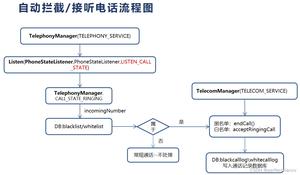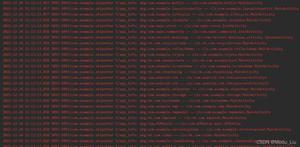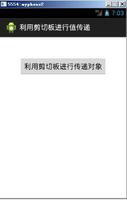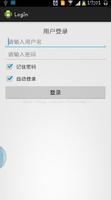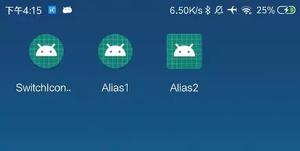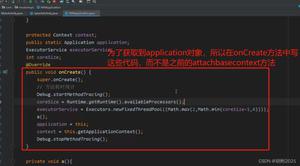Android的XML常用标签整理
一、XML和HTML的异同
1、常规标签和自闭合标签
XML和HTML有许多相似之处,XML的标签分为两类。
一类是成对的标签,例如<manifest>和</manifest>
另一类是自闭合标签,因为这一类标签的里面没有内容,所以它只需要一个标签就能实现所有功能,例如
<activity android:name=".MainActivity2"
android:exported="false" />
自闭合标签可以转换成常规的成对的标签,只需要去掉最后的/,再加上</name>即可。
2、标签内的属性
熟悉HTML的同学肯定知道HTML标签内部可以加CSS样式、定义class、定义ID以及使用标签所拥有的属性,而一对标签的中间显示的是内容。例如:
<p style="color: white" class="mt-4">努力加载中... </p>但Android XML的用法有细微的区别,没有“标签中间的字符表示内容”这个功能。而是写在某个属性里。例如:
<Button android:text="Hello"/>所以,在layout布局中,绝大多数标签都是自闭合标签。
二、常见Android页面元素的标签及属性
1、Android主配置文件AndroidManifest.xml
manifest有显示的意思,这个文件定义了包名、活动、启动的活动等等。例如:
<?xml version="1.0" encoding="utf-8"?><manifest xmlns:android="http://schemas.android.com/apk/res/android"
package="com.example.myapplication" > ①
<application
android:allowBackup="true"
android:icon="@mipmap/ic_launcher"
android:label="@string/app_name" ②
android:roundIcon="@mipmap/ic_launcher_round"
android:supportsRtl="true"
android:theme="@style/Theme.MyApplication" > ③
<activity ④
android:name=".MainActivity" ⑤
android:exported="true" >
<intent-filter>⑥
<action android:name="android.intent.action.MAIN" /> ⑦
<category android:name="android.intent.category.LAUNCHER" />
</intent-filter>⑥
</activity> ④
</application>
</manifest>
常见属性:
① manifest中的package定义了包名,包名就像其他语言中的命名空间,告诉计算机这个类的住址,JAVA根据包名+类名来确定唯一的类
② android:label属性声明软件的软件名,这个标题运行时会写在页面的顶部(如果页面没有定义标题的情况下)
③ android:theme属性声明的软件的主题,引入了另一个主题文件来设定样式,类似全局CSS文件
④ <activity>标签是定义活动的标签,所有的活动都要写在这里,因为标签内部有其他内容,分裂成常规的成对标签
⑤ android:name属性,指出这个活动的类名,这个类名和JAVA文件相对应。之所以有一个.是因为JAVA查找类的时候使用 “包名.类名”
⑥ <intent-filter>是意图选择器,意图用来完成活动之间的通信。意图选择器可以告诉Android系统,这个活动可以处理什么类型的意图
⑦ <action>是一个动作,android.intent.action.MAIN表名这个活动是主活动,也就是整个Android的入口
2、layout布局
一个空的,没有任何元素的活动,代码是这个样子的:
<?xml version="1.0" encoding="utf-8"?><androidx.constraintlayout.widget.ConstraintLayout ①
xmlns:android="http://schemas.android.com/apk/res/android"
xmlns:app="http://schemas.android.com/apk/res-auto"
xmlns:tools="http://schemas.android.com/tools"
android:layout_width="match_parent" ②
android:layout_height="match_parent"
tools:context=".MainActivity"> ③
</androidx.constraintlayout.widget.ConstraintLayout>
① <androidx.constraintlayout.widget.ConstraintLayout> 这个标签指的是活动的布局(Layout)
② android:layout_width属性用来定义此元素的宽度,layout_height用来定义高度。
如果按住Conmand键点进去就能看到这个属性允许设定的值:
遇事不决就翻译:
指定视图的基本宽度。这是包含布局管理器的任何视图所必需的属性。其值可以是恒定宽度的尺寸(如“12dip”)或特殊常数之一。
fill_parent: 视图应该和其父视图一样大(减去填充)。从API级别8开始,这个常量被弃用,并被{@code match_parent}替换
match_parent:视图应该和其父视图一样大(减去填充)。在API级别8中引入
wrap_content:视图的大小应仅足以包含其内容(加上填充)
③tools:context属性表名这个活动的类名。
3、layout的TextView文本框
这个标签的效果等于HTML的P标签。
<TextView ① android:id="@+id/textView2" ②
android:layout_width="wrap_content" ③
android:layout_height="wrap_content" ③
android:layout_marginTop="172dp" ④
android:layout_marginEnd="264dp" ④
android:text="HelloWorld" ⑤
app:layout_constraintEnd_toEndOf="parent"
app:layout_constraintTop_toTopOf="parent" />
① 指明这是一个TextView
② android:,ID很重要,Android根据ID定位唯一的XML元素,ID的值必须使用@+id/name
③ android:layout_width属性设定宽度,layout_height设定宽度,三个特殊值和前文提到的相同
④ android:layout_margin指定此视图顶部的额外空间。这个空间在这个视图的边界之外。
Android XML中,border、margin和CSS中的思想完全相同
⑤ android:text指定此XML元素内容的字符,相当于P标签中间的内容
4、layout的botton按钮
<Button ① android:id="@+id/button"
android:layout_width="wrap_content"
android:layout_height="wrap_content"
android:layout_marginEnd="56dp"
android:layout_marginBottom="121dp"
android:text="Button" ②
android:onClick="onClickFunction" ③
app:layout_constraintBottom_toBottomOf="parent"
app:layout_constraintEnd_toEndOf="parent" />
① 指定这是一个按钮
② android:text指定按钮上的文字,相当于HTML中button中间的内容
③ android:onClick(重要)指定此按钮点击后,执行哪个方法,内容为本Activity中的方法名
5、layout中的spinner选择器
spinner相当于HTML中的select组件
<Spinner ① android:id="@+id/spinner"
android:layout_width="wrap_content"
android:layout_height="wrap_content"
android:layout_marginStart="172dp"
android:layout_marginBottom="304dp"
android:entries="@array/string_array" ②
app:layout_constraintBottom_toBottomOf="parent"
app:layout_constraintStart_toStartOf="parent" />
① 指定此元素是一个spinner
② android:entries 指明此选择器的数据源,也就是下拉菜单的内容。内容来自string文件。
三、总结
对于任何一门语言,熟悉基本写法的过程都是查文档、看源码和实践操作的结合。
对于不熟悉的标签,多看、多翻译源码里面的注释,可以获得不错的效果。
以上是 Android的XML常用标签整理 的全部内容, 来源链接: utcz.com/z/267550.html


